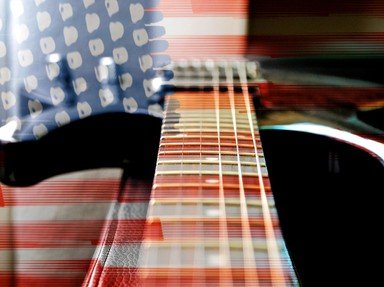Quiz Answer Key and Fun Facts
1. Oh, it seemed innocent enough. "Did he ever return? No he never returned. And his fate is still unlearned." I sang along with the catchy tune as I rode in the car with my dad. But unknowingly, at the tender age of nine, I was being seduced into singing along with a protest song written to further the candidacy of a known communist! What social injustice was the Kingston Trio protesting in their 1959 folk song, "MTA"?
2. Playing banjo on the oldest recorded version of "MTA" in 1949 was a young songwriter - Pete Seeger. In 1954, Seeger copied from a Russian novel three lines of a song being sung by Cossack soldiers:
"Where are the flowers? The girls have plucked them.
Where are the girls? They've taken husbands.
Where are the men? They're all in the army."
One year later, on finding these notes, Seeger wrote the bittersweet initial version of a song that asked the question "When will they ever learn?" In 1962, the Kingston Trio's version of the song became the first antiwar folk song to find its way onto the Billboard charts. What word fills in the blank in the song's title: "Where Have All the __________ Gone?"
3. The rising popularity of folk music coincided with the availability and subsequent popularity of long-playing stereo record albums. A group with negligible Top 40 success, The Chad Mitchell Trio, recorded an album at a Greenwich Village Coffee House in 1962 that included a song with these lyrics:
"We'll teach you how to spot 'em in the cities or the sticks.
For even Jasper Junction is just full of Bolsheviks.
The CIA's subversive, and so's the FCC.
There's no one left but thee and we, and we're not sure of thee."
What was being criticized in this song?
4. August 28, 1963, the March on Washington. Two hundred fifty thousand people gather in Washington to demonstrate for civil rights. Before Martin Luther King delivers his famous "I have a dream" speech, Joan Baez, Bob Dylan, Peter Paul and Mary and the Albany Freedom Singers all perform; but which of them sings Bob Dylan's "Blowing in the Wind"?
5. In 1964, Ku Klux Klan members abetted by a local Sheriff killed Andrew Goodman and two other men who were investigating the burning of a black Methodist church. A former college classmate of Goodman's wrote a song chronicling the death of a civil rights worker and dedicated it to Goodman. The Song became part of the album "Wednesday Morning, 3 A.M.", which the songwriter recorded with a high school friend. Who comprised this duo?
6. In the 1960s this folksinger's civil rights and antiwar activism earned her both acclaim and derision. Although she recorded a number of popular albums, her first successful single did not come until 1965 with her recording of Phil Och's "There But For Fortune". Cartoonist Al Capp lampooned her frequently in his comic strip "Li'l Abner" as "Joanie Phonie". Who was this singer?
7. By 1965, Bob Dylan had assumed a position of eminence as both a songwriter and performer as well as establishing himself as a political and social activist. What action did Dylan take in 1965 that angered and alienated a number of his fans and resulted in him being booed at some of his performances?
8. As Bob Dylan veered away from political content, Phil Ochs, a friend from his days in Greenwich Village was becoming ever more political. In 1965 Ochs sang:
"It's always the old to lead us to the war.
It's always the young to fall.
Now look at all we've won with the saber and the gun.
Tell me is it worth it all?"
From which Phil Ochs song do the above lyrics come?
9. The year 1965 also saw the release of songwriter Paul Sloan's "Eve of Destruction", which ultimately reached #1 on the Billboard charts. Which former member of the folk group "The New Christy Minstrels" and a friend of the Byrds Jim McGuinn performed the song?
10. In the 1960s, the University of California at Berkeley became a site for demonstrations relating to free speech and opposing the war in Vietnam. In 1965, a Berkeley folksinger put together a band and recorded the first version of the "I Feel Like I'm Fixin' To Die Rag" on a four song disc distributed as an issue of the magazine "Rag Baby". The songwriter would later perform the song at Woodstock. The lyrics included the following:
"Well, come on mothers throughout the land,
Pack your boys off to Vietnam.
Come on fathers, don't hesitate,
Send 'em off before it's too late.
Be the first one on your block
To have your boy come home in a box."
Which of the following San Francisco Bay Area bands recorded the "I Feel Like I'm Fixin' To Die Rag"?
Source: Author
Uglybird
This quiz was reviewed by FunTrivia editor
agony before going online.
Any errors found in FunTrivia content are routinely corrected through our feedback system.

